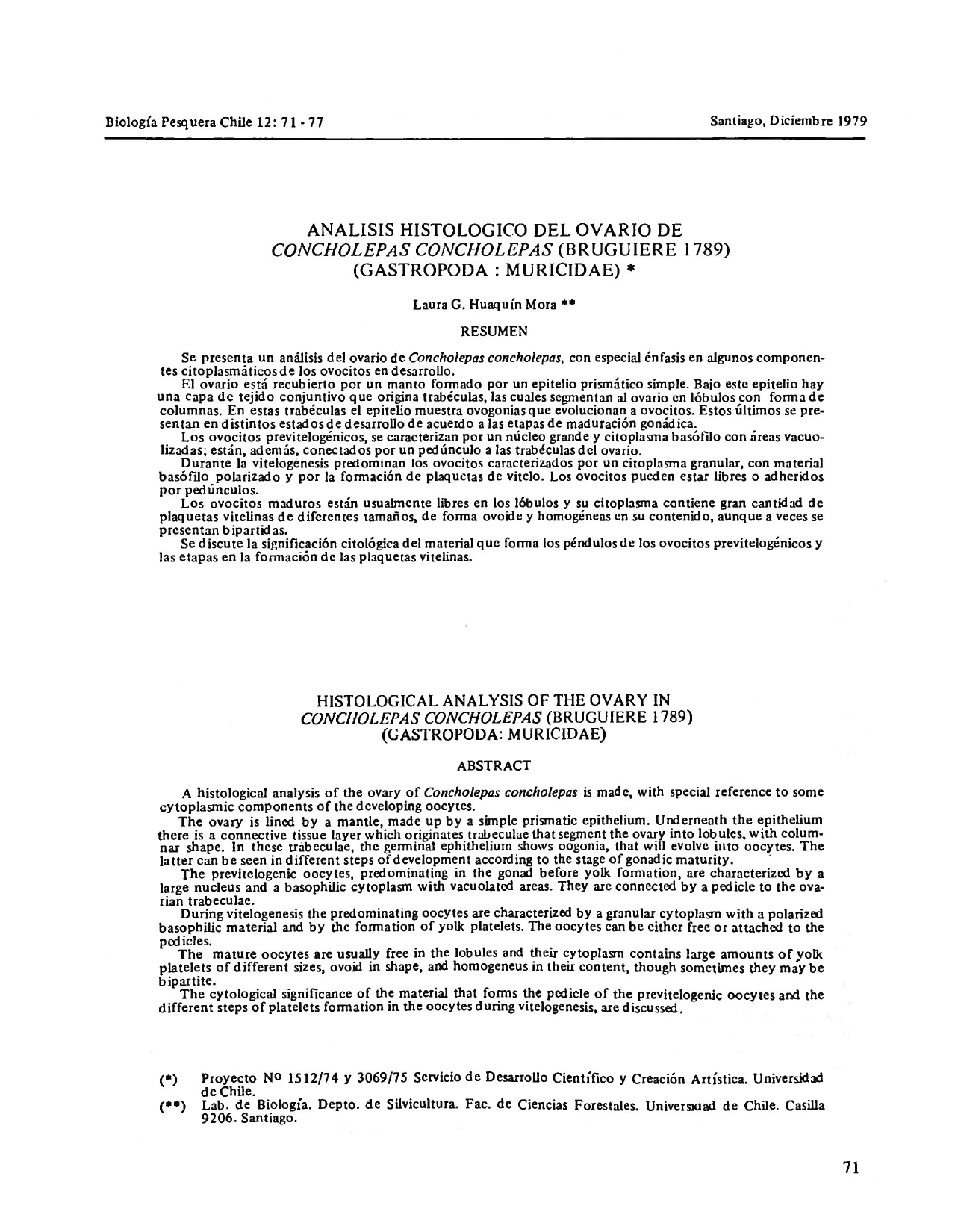HISTOLOGICAL ANALYSIS OF THE OVARY IN CONCHOLEPAS CONCHOLEPAS (BRUGUIERE 1789) (GASTROPODA: MURICIDAE)
DOI:
https://doi.org/10.21703/0067-8767.1979.12.2465Abstract
A histological analysis of the ovary of Concholepas concholepas is madc, with special reference to some cytoplasmic components of the dcveloping oocytes. The ovary is lined by a mantle, made up by a simple prismatic epithelium. Underneath the epithelium there is a connective tissue layer which originales trabeculae that segmcnt the ovary into lobules, with columnar shape. In these trabeculae, the germinal ephithelium shows oogonia, that will evolve into oocytes. The latter can be seen in different steps of development according to the stage of gonadic maturity. The previtelogenic oocytes, predominating in the gonad before yolk formation, are characterizcd by a large nucleus and a basophilic cytoplasm with vacuolatcd areas. They are connected by a pedicle to the ovarían
trabeculae. During vitelogenesis the predominating oocytes are characterized by a granular cytoplasm with a polarized basophilic material and by the formation of yolk platelets. The oocytes can be cither free or attachcd to the pcdicles. The mature oocytes are usually free in the lobules and their cytoplasm contains large amounts of yolk platelets of different sizes, ovoid in shape, and homogeneus in their contení, though sometimes they may be bipartite.
The cytological significance of the material that forms the pedicle of the previtelogenic oocytes and the different steps of platelets formation in the oocytes during vitelogenesis, are discussed.


